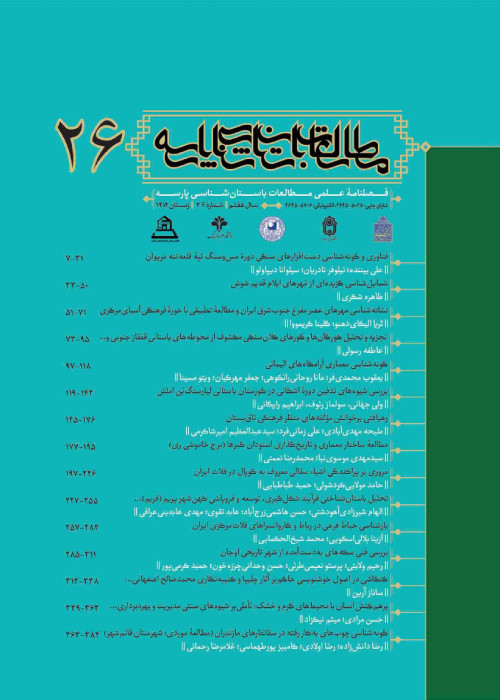Investigattion of Calligraphy Works of Chalipa and the Inscriptions of Mohammad Saleh Esfahani, Based on the Three Systems of Baseline, Composition and the Visual Weight
Mohammad Saleh Esfahani was one of the prominent calligraphers and inscription writers of the Safavid period, under the rule of Shah Suleiman and Shah Sultan Hussein. According to the findings, a significant number of Nastaliq inscriptions in the buildings of Isfahan belong to him. In addition, there are several Chalipas by Mohammad Saleh. Based on this, it is important to explore his works in the field of calligraphy studies for finding methods of analysis of other works in this field. The purpose of this research is to investigate the differences between the pieces of Chalipa and the inscriptions of Mohammad Saleh Esfahani in three systems of baseline, composition and the visual weight. The question is, what are the differences between the Chalipa pieces and the inscriptions of Mohammad Saleh Esfahani according to the principles (which was mentioned)? And what are their reasons? The hypothesis of this research indicates that there are differences between the Chalipa and inscriptions of Mohammad Saleh, which can be recognized and investigated by three mentioned calligraphy systems. This descriptive-analytical research is done by use of library resources in order to analyses some of Mohammad Saleh Isfahani’s works, including the inscriptions were found in three buildings in the city of Isfahan (Chaharbagh School, Imamzadeh Ismail, and the tombstone of Saeb Tabrizi Tomb) and some Chalipa pieces (available in museums and libraris). The results of the research show that there are differences in the application of calligraphy principles in the three systems of baseline, composition and the visual weight in pieces of Chalipa and inscriptions because of various reasons such as: text content, limitations of design , pen Dang. , the appropriate level of the works and etc. based on these reasons, it can be found that Mohammad Saleh Esfahani has adopted different methods and principles for the calligraphy of Chelipa and inscriptions.
- حق عضویت دریافتی صرف حمایت از نشریات عضو و نگهداری، تکمیل و توسعه مگیران میشود.
- پرداخت حق اشتراک و دانلود مقالات اجازه بازنشر آن در سایر رسانههای چاپی و دیجیتال را به کاربر نمیدهد.


